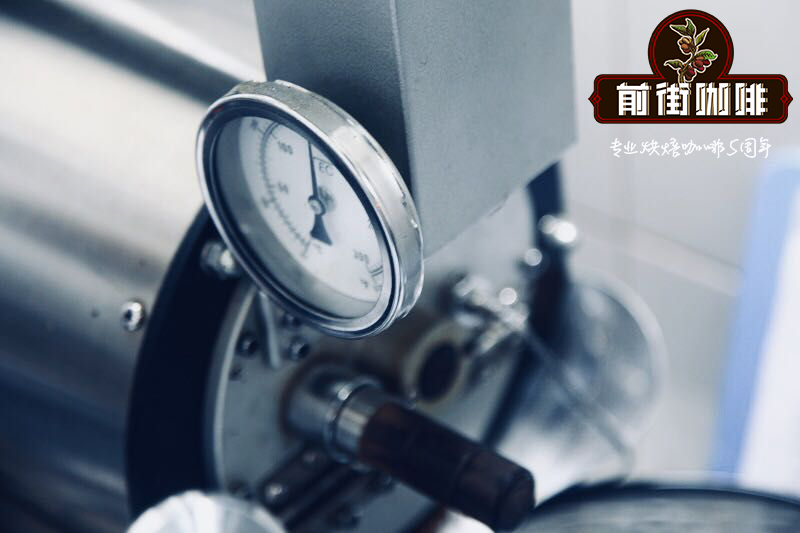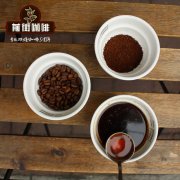Coffee treated with anaerobic honey coffee flavor description of coffee treated with anaerobic honey

Professional coffee knowledge exchange more coffee bean information please follow the coffee workshop (Wechat official account cafe_style)
Anaerobic process: producing new flavors through innovation
Costa Rica is famous for being at the forefront of innovation in coffee processing methods. Especially famous for honey processing, producers and processing plants all over the country are actively pursuing innovation to improve the flavor of coffee.
Recently, a new processing method called anaerobic treatment has attracted people's attention, which makes customers ask: "what is the secret behind the unique taste of this coffee?" "this method is different from what we usually see. Luis Educardo Campos from Alajuela, San Lamond, works to improve it at his Hell Mountain factory.
Let's take a closer look.
Generally speaking, anaerobic means anaerobic. You may ask, how is this associated with a coffee fermentor usually in an open space? A: coffee is placed in a sealed stainless steel container. In addition to producing new, unexpected flavors, the anaerobic process provides a high level of control over sugar, temperature, pressure, pH and time.
Before we learn how it works, we need to review some facts. First of all, the taste of coffee is concentrated in fruit juice, not seeds. Coffee cherries are the fruits of shrubs, and sugar is contained in mucus. The concentration of sugar and taste depends on the variety, maturity and soil type of the fruit.
Now let's continue this process. First, depilate the coffee and put the seeds in the fermentor. The separated mucus is tightly packed into a gel-like sticky substance and then added to the fermentation tank until it covers the entire parchment. With the beginning of fermentation, the content of oxygen decreases and the content of carbon dioxide increases, resulting in pressure in the fermentor. The process lasts 18 to 23 hours-enough mucus to be consumed, but not enough to produce alcohol. After 15 hours, the pH value needs to be controlled continuously to determine the progress of fermentation.
The pressure of carbon dioxide allows the taste of coffee to be injected into parchment. Once the fermentation is over, open the container (be careful! Due to high pressure). Then dry the coffee for at least 4 hours, otherwise the fermentation may continue and the taste will change.
Where's the coffee?
Two different kinds of coffee from two different regions are used in our anaerobic coffee Cordillera de Fuego: Tarazu and West Valley (from Zacero to be exact). Both coffees were grown between 1400 and 1500; caturra catuai. This sounds like typical Costa Rican coffee, right? This is where the anaerobic process works. The creamy texture of this coffee will immediately attract your attention, as well as its floral and cinnamon flavor; it also has good acidity. These complex notes are directly related to the fermentation process. Taste different!
END
Important Notice :
前街咖啡 FrontStreet Coffee has moved to new addredd:
FrontStreet Coffee Address: 315,Donghua East Road,GuangZhou
Tel:020 38364473
- Prev

The Story of Jensen Manor in Panama is the coffee good in Panama?
Professional coffee knowledge exchange more coffee bean information please follow Coffee Workshop (Wechat official account cafe_style) Janson Geisha Coffee Farm in Walcan, Panama is not just an agricultural project. There is a story about what drives passionate creation. As a three-generation family-run farm, we see that the essence of coffee cultivation represents us.
- Next

Papua New Guinea Coffee flavor Papua New Guinea Coffee Story
Professional Coffee knowledge Exchange more information on coffee beans Please follow the coffee workshop (Wechat official account cafe_style) Coffee in Papua New Guinea is a cup of coffee full of wild, just like the island itself. These coffees have a bright and subtle malic acidity, which distinguishes them from other Sumatran and Sulawesi varieties of Southeast Asian archipelago coffee. You
Related
- Beginners will see the "Coffee pull flower" guide!
- What is the difference between ice blog purified milk and ordinary milk coffee?
- Why is the Philippines the largest producer of crops in Liberia?
- For coffee extraction, should the fine powder be retained?
- How does extracted espresso fill pressed powder? How much strength does it take to press the powder?
- How to make jasmine cold extract coffee? Is the jasmine + latte good?
- Will this little toy really make the coffee taste better? How does Lily Drip affect coffee extraction?
- Will the action of slapping the filter cup also affect coffee extraction?
- What's the difference between powder-to-water ratio and powder-to-liquid ratio?
- What is the Ethiopian local species? What does it have to do with Heirloom native species?

